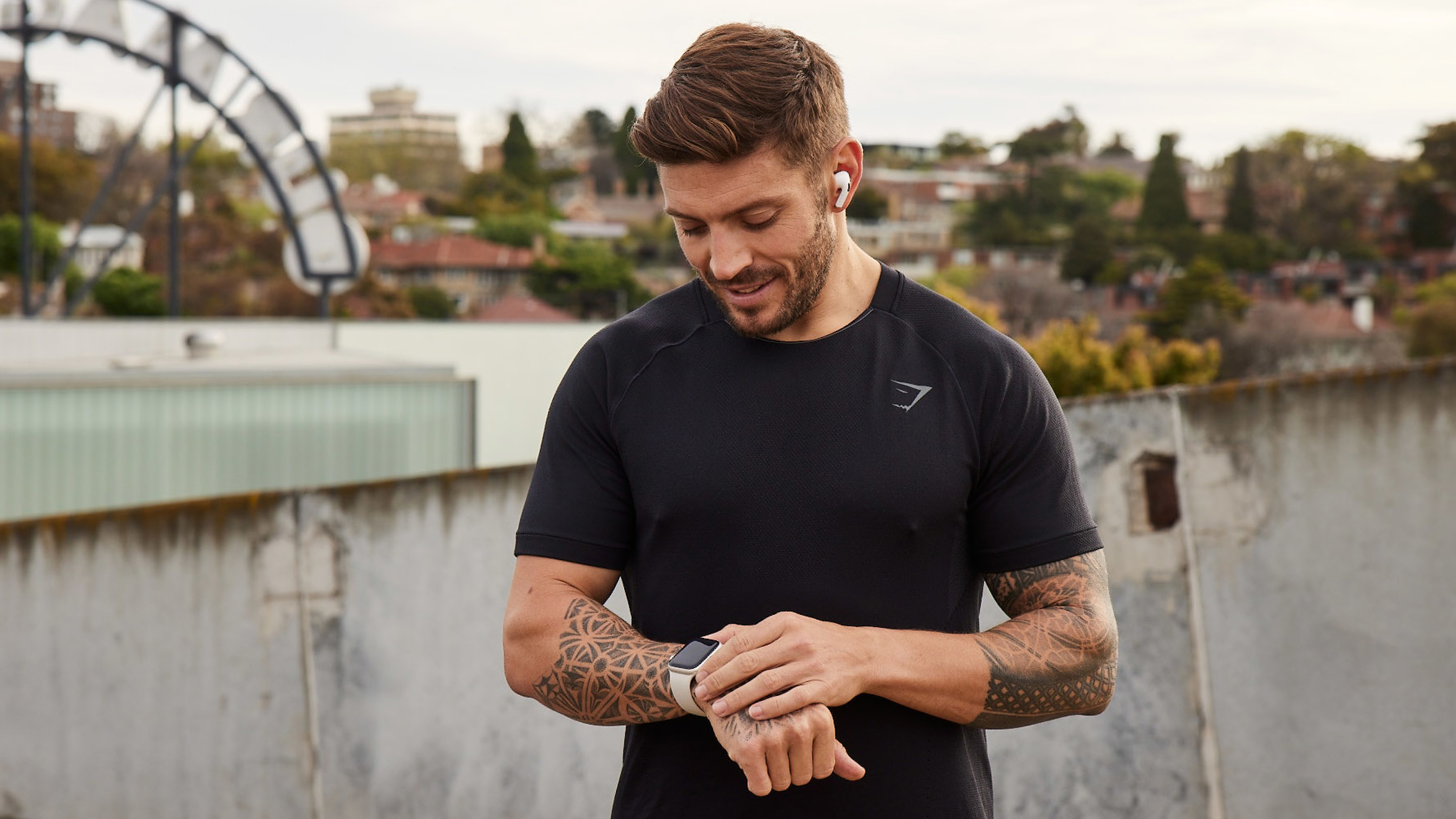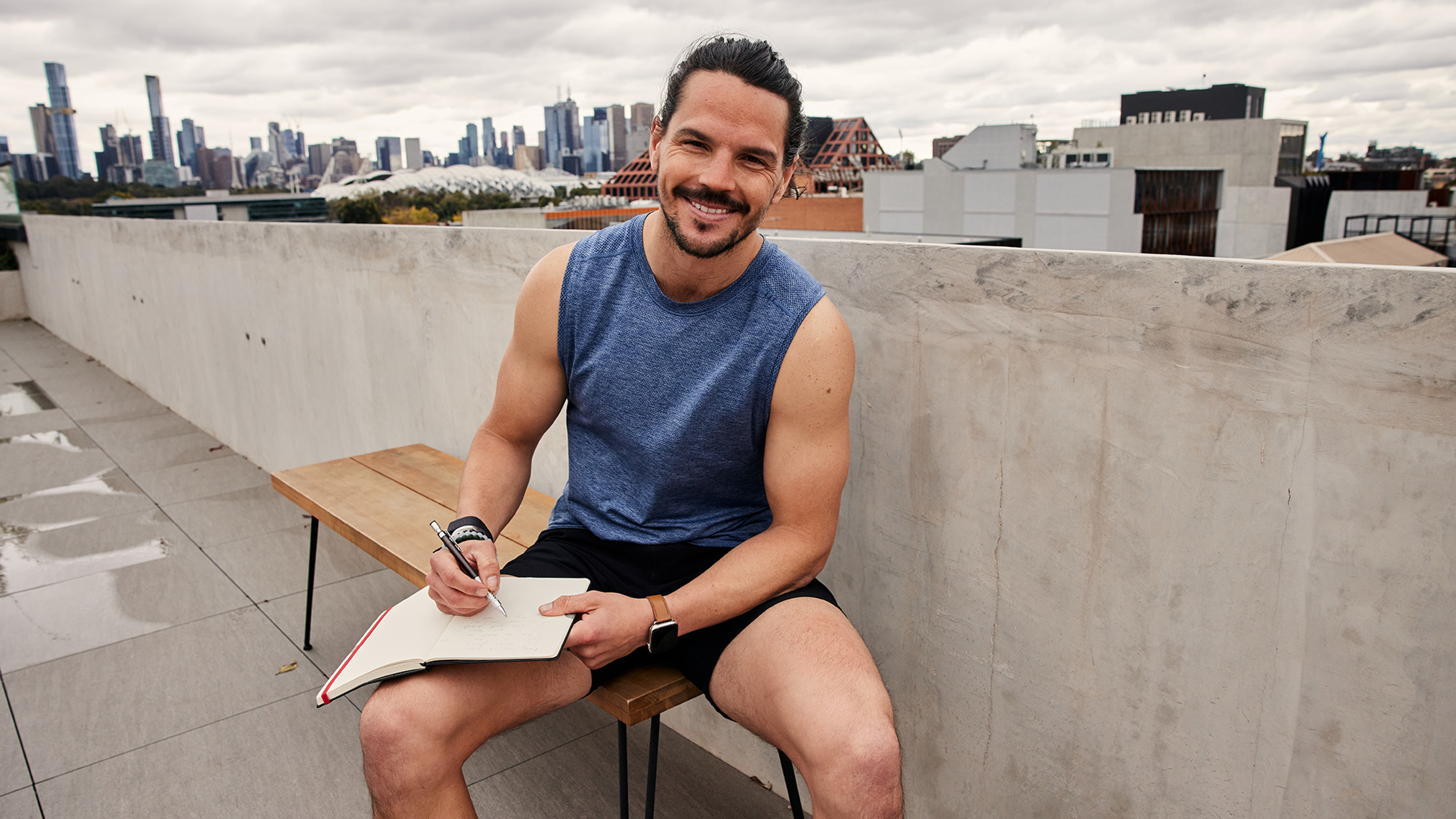4 tips to keep your fitness goals on track
Want to “get fit”? You’ll need more than good intentions.
Vague goals lead to vague results. But dial in a clear fitness goal – one that means something to you – and everything changes. You’ll move with purpose, stay consistent and see real progress.
Whether you’re chasing your first push-up, mastering crow pose, or training for a half-marathon, the right goal can turn “someday” into “I did it.”
Let’s break down how to set fitness goals that actually stick – and get you where you want to go.

Already set your fitness goals but need help making them happen? Find the Centr training program that matches where you’re at.
What makes a good fitness goal?
You already know exercise is good for you. But let’s be real – that alone isn’t always enough to get you off the couch.
A clear, result-oriented fitness goal could be the boost you need to get moving. Studies back this up: people who set specific goals are way more likely to build healthy habits and stick to them long-term.
A broad goal like “get fit” sounds good, but what does it actually mean? If you can’t measure it, you can’t track it. To create a specific goal, start by defining what ‘fit’ means for you.
Maybe it’s crushing a hike without needing to take a breather, or smashing five full push-ups with proper form. A specific goal gives you something real to chase when training gets tough or when your bed seems more appealing than the gym.
Need some inspiration? Here are a few fitness goal examples to help you write up some of your own.
- Instead of "get stronger" try: "Deadlift 1.5 × bodyweight in 12 weeks."
- Instead of "improve cardio" try: "Run 5 K in under 25 minutes by July."
Clarity removes the guesswork from your training plan. You’ll know exactly what you’re aiming for and when you’re on track.

Short-term challenges help your long-term goals take flight. Find out how from trainer Luke Zocchi.
Short-term vs long-term goals
Now that you know how to set goals, it’s time to layer them up into tangible, sustainable progress.
- Short-term goals keep you moving with quick wins and steady progress.
- Long-term goals give your training direction – they’re the big picture you’re working toward.
One fuels action and the other gives it meaning – together, they make your results stick.
Here’s an example of how short-term goals can ladder up into long-term objectives.
Short-term goals (4-8 weeks):
- Work out three times per week for a month
- Increase daily protein intake
- Get seven hours of sleep each night for a month
Long-term goals (3-12 months):
- Increase max bench press by 10 percent
- Reduce body fat and add lean muscle mass
- Run a half-marathon
Remember, short-term goals are your stepping stones – they break up long-term vision into actions you can actually stick to and check off as you go.
If you’re not sure where to start, take the FitQuiz in the Centr app – it'll help you refine your goals and deliver a personalized plan to get you where you want to go. And remember, priorities can shift – so you can change your goals at any time.
4 tips for achieving your fitness goals
Motivation gets you started, but it won’t always show up when you need it. That’s where consistency takes over. It’s not about waking up every day feeling pumped, it’s about doing the work anyway – because your goal matters, not because you feel like it.
So how do you stay consistent when motivation dips? (It will drop, by the way.) You build habits that make training automatic, like brushing your teeth, but sweatier. Here are four tips that can help:
- Lock it into your schedule. Treat workouts like non-negotiables – just like a work meeting or doctor’s appointment.
- Track what you do. Mark it off in a notes app or calendar – visible streaks keep momentum high.
- Celebrate the small stuff. First unassisted pull-up? Weekly step goal? Reward yourself – you’ve earned it.
- Stay adaptable. Missed a workout? Pivot to a 15-minute circuit or a brisk walk. Something beats nothing.
And always remember: progress doesn’t follow a straight line. You’ll plateau, get bored, feel flat – that’s normal. Keep showing up, tweak what needs tweaking and trust the process.

Feeling constantly low on motivation? The real issue might lie within your gut.
Fitness goals aren’t one-size-fits-all
Men, women, beginners, pros – forget the labels. Your goal should reflect who you are and where you want to go.
Sure, fitness goals for men might usually differ from women. But there are no rules here. Women deadlift. Men do Pilates. Anyone can train in the way that works for them.
The most important thing about goal setting is whether it fits your life, your body and your drive. If it fires you up, you’re on the right track.
Common goal-setting traps (and fixes)
Even solid goals can fall flat if you aren’t framing them with the right mindset. Here are a few common traps to avoid.
- All-or-nothing thinking: Missed one workout? No big deal. Move when you can and keep going.
- Comparison syndrome: Social feeds can inspire or derail. If it drags you down, unfollow and refocus.
- Unrealistic timelines: You can’t transform in two weeks. Real change takes time.
- No plan in place: A goal without a plan is just a wish. Break it into short-term steps.
Finding it hard to stay on track? These tips might help:
- Make it visible. Write it down. Keep it where you’ll see it daily.
- Get accountable. Team up or join a class; you’ll stick to it more easily.
- Focus on how it feels. More energy, better sleep, improved mood count as real wins.

Ready to try hacking your habits instead? We’ve got you covered.
Your fitness goals FAQ
As you embark on your fitness goals, questions will pop up. We’ve answered some of the most common here.
How often should I reassess my goals?
Every 4–6 weeks is a great checkpoint. Adjust up or down based on progress and life changes.
What if I lose motivation?
Motivation ebbs and flows – rely on habits. Small wins, playlists, revisiting your ‘why’, or showing up anyway can get you moving.
Serial procrastinator? Try these five meditations to get up and moving.
What do I do if I hit a plateau?
Plateaus mean adaptation. Mix up training style, intensity or set a new goal to reignite progress.
What should I do if I feel overwhelmed?
Shrink the goal. Focus on one actionable step today; tiny, repeatable wins compound over time.
Do I need to track everything?
Track the right metrics for your goal – workouts completed, weight lifted, distance run or sleep hours – and review weekly for patterns and progress.



Leave a comment
Este site está protegido pela Política de privacidade da hCaptcha e da hCaptcha e aplicam-se os Termos de serviço das mesmas.